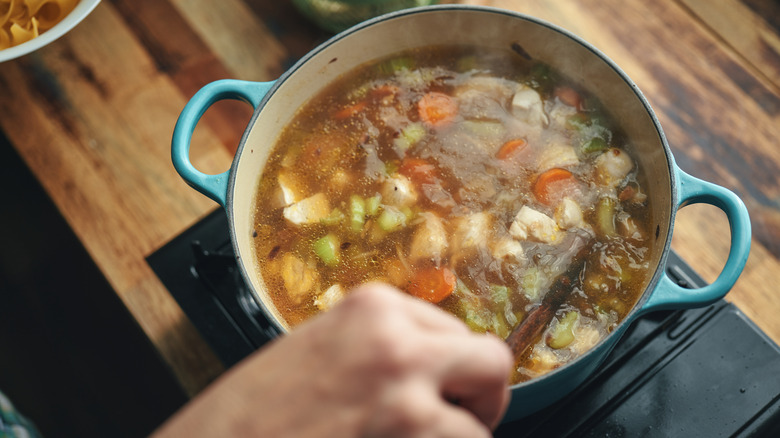Do You Start With Hot Or Cold Water When Boiling Veggies? Here's The Easy Tell
There are a few very simple, very common cooking questions that I'm ashamed to admit I Google every time. "How to boil potatoes" is one. It might seem mind-numbingly self-explanatory: you boil them, it's right there in the question. But how? Do you put the potatoes in after the water is boiling, or before? Maricel Gentile, chef and owner of Maricel's Kitchen and author of "Maricel's Simply Asian Cookbook," broke it down for the Takeout.
"Start starchy vegetables like potatoes or yuca in cold water so they cook evenly from inside out," Gentile explained. Starchy vegetables start cooking the moment they hit hot water. If you drop them into boiling water, the outsides will cook before the heat has a chance to penetrate, resulting in a mushy exterior and an undercooked interior. Plus, cooking potatoes at lower temperatures strengthens their pectin structure, which gives the spuds a better texture (adding a little vinegar to the water helps keep the pectin from breaking down, too). This cold-start technique is even recommended when parboiling them, despite parboiling typically involving faster cooking times.
Other tough root vegetables, like carrots and parsnips, should start in cold water, too. There are some exceptions, though. "Drop green vegetables like broccoli, peas, or beans into boiling water so they keep their bright color and crisp, tender bite," says Gentile.
What to do if you're cooking different vegetables in the same pot
But what if you're combining a bunch of different vegetables together in a pot, as you would for a soup or a hearty Brunswick stew? "Add them in order of firmness," Maricel Gentile explained. "Potatoes first, then carrots, then softer greens last." Note that she specified softer greens: Tougher stuff, like collards or kale, may need to simmer for up to an hour. Add them early on so they have plenty of time to cook.
Some cooks start by sauteing vegetables like squash, carrots, or celery, then add liquids and other ingredients. Sauteing vegetables helps develop flavor through the Maillard reaction, but those vegetables can end up mushy if they're left to cook in the soup for too long. Try sauteing the vegetables first, then remove them and add them back to the soup at the end. Use ready-made stock or broth to season the soup instead of relying on the flavor of the boiled vegetables. It's not a necessity if you just want a quick and easy meal — but a little conscientiousness goes a long way.

